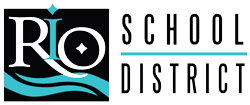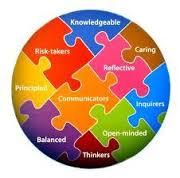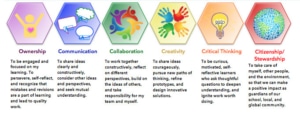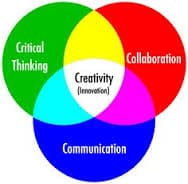21st Century Skills? Practices? Stuff?
As we enter into the year 2017, there is quite a buzz afoot in education circles about 21st century skills. As an educator for the last 31 years it’s refreshing and a bit exciting to see the recent reform 21st century learning movement. The origins, as have been described to me as well as emerging from basic research forays, is the idea that American businesses and corporations were dissatisfied by the quality of worker coming to them post-schooling. It would seem, they had been educated for a factory that no longer exists in significant numbers. With one peek under the hood of our schools, folks suggested that the way we arrange our schools and learning experiences were less relevant and non-parallel to the work experience the young “educated” would encounter in 21st century contexts. In addition, much has been made about the rate of change (technologically driven) that our 21st century inhabitants experience and the incongruent experience that our schools were providing in that they seemed to be frozen in an inert time warp somewhere between 19th century British classrooms and the American 1950’s.
One way or the other, these notions and other currents in the educational stream, have given way to the 4 Cs and a whole lot more Cs that have followed. A new set of foci have emerged and I think they are great on their own; communication, collaboration, critical thinking, and creativity. The Rio School District has added the 5th C, Caring which is another great thing in my opinion. Reaching back to the purported origins, the world of business has suggested that students who can communicate, collaborate, critically think, and be creative are just what they need in their 21st century enterprises and I would suggest that they have it right. What’s exciting to me beyond the generalized pragmatism of these business driven aims for education, is the idea that these 4 Cs and the many other C s that educators can imagine and design lessons for are really great focal points for the construction of curriculum, units, lessons, schools, Districts, partnerships that have the potential to guide young learners and educators into developing full human beings that can live and thrive in the 21st or any century.
To some degree this 21st century reform movement seems linked to the enlightenment of centuries past. For me this focus on the 4 Cs and the other Cs that help to fully humanize our schooling efforts are both a return to progressive thought and a reaching towards the future in which we ask basic questions about freedom and the purposes of education and schooling in general. Allowing all students to talk and discover language as a means for intellectual development is a good start and a departure from the sit there, shut up, and do your workbook mindset. Thus we have communication at its essence. Collaboration, that we allow children to learn from the feedback loop-rich context of cooperative learning and group work is a nod to the years of positively leaning research on the effects and constructs of of socially constructed learning. Critical thinking emerges as schools come to understand that the world of work and the world of life in any century is filled with complexity and uncertainty. Thus, in order to problem solve and navigate complexity, we need to be experienced in working through problems that are such that they do not lend themselves to simple uni-algorithm solutions. This suggests the idea that there is rarely the one right answer and that learning is not best done for all by setting up a race to see who gets the right answer first and more often. Finally, there is creativity, which emerges in the corporate sense from divergent or innovative thinking and design. That is, coming up with unique or divergent solutions to problems in order to think about the problems in new ways and perhaps create pathways for solutions that have previously been non-existent. While this form of creativity is certainly the engine of the day in terms of economies and business, it is also at the root of the basic survival techniques of doing a lot with a little. This tradition of creative survival has been a root of human development in every century. All this said, the idea that having the last 4 C for creativity promoted and permitted is giving way to the return of many school activities that we all know and have always known that all children and humans in general deserve and need. That is, the arts and making, and playing, and expressing and while I am not sure we can teach that per se, we can certainly create the conditions that foster it for all learners and educators.
There are Skills and there are Skills. The traditional skills were conceived as the three Rs. Reading, wRiting, and aRithmetic. Taken together they can conjure the aims of the basic work of the 19th and 20th century school to produce basic literacy for workers and citizenry. As we think about the new 21st century skills, are we juxtaposing this same mindset on a much more complex and dynamically changing factory or should we consider the differences between skills and say practices. Even this idea of practices which lends itself to a more professional frame and is a major component of this age’s New Math and New Science has a very pragmatic orientation. That is, it suggests that same parallel in education between what learners do in classes and what say doctors or lawyers do in their “practices.” These professions never get all the answers right, they work on it and practice. They learn from their experience and study. These practices also suggest to the learner that the entire process of life is a verb not a noun. It is a learning process. Finally, I would say that at this point I prefer to just call it all stuff. The stuff we ask kids to do during what we call school and later define as education.
Whether it is the 4 Cs the 5 Cs or the 22 Cs, I am heartened by the world of professional educators’ leaning towards “stuff” for children that are more fully human and that lead to freedom, choice and simultaneously guiding learners to know themselves, and the world, while learning to live and learn with others. I am also heartened by this leaning to actively pursue these opportunities for all children. While it may take years or never happen that we create scoring systems a la grades, tests, credentials that don’t benefit some children to the detriment of others, we can at minimum, provide rich 21st century 4 C infused opportunities for every child in every school. In this sense, it’s a great time to be an educator in the 21st century. We shall see if it can sustain itself. The sustaining of these efforts which seem to resonate with students and families from every walk of life must also come from the students and families themselves. They must advocate for 21st century learning contexts and support professional educators that help to design and develop them. Ultimately, the 21st century school can be a fusion among professional educators, learners, families, and communities that render developing and redeveloping learning processes that can guide and prepare students for the 21st or any century. For if we don’t educate in 21st century ways, it is laughable, as we are now sixteen years into the century.
I have pasted below some amazing examples of Districts visualizing this work; its great to see the spirit and innovation developing in the American public school system.
BLOG CATEGORIES
